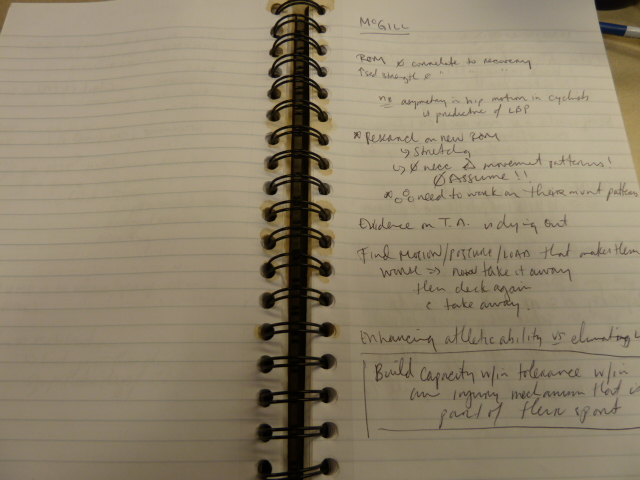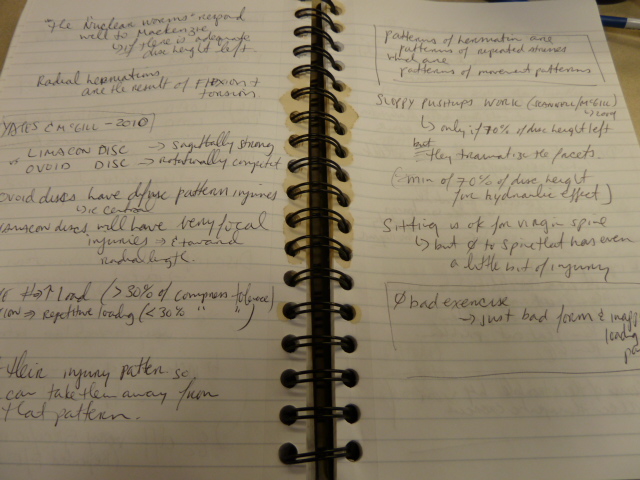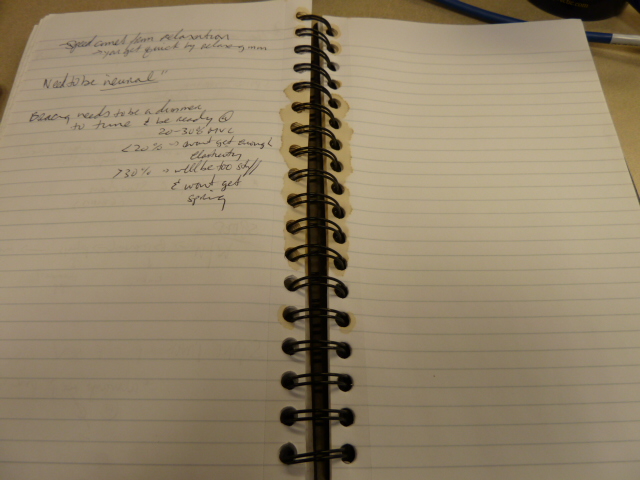|
Below are my notes from Dr. McGill's "Building the Ultimate Back" workshop hosted by MSK+ on November 20-21, 2010. A total of 32 pages of notes were taken throughout the weekend. Prior to reading the following, I kindly ask that you take two things into consideration:
Enjoy! Range of motion and strength do not necessarily correlate with recovery
"Build capacity within tolerance within an injury mechanism that is part of their sport"
"The Lats activate natures 'back belt'"
"Scientists set up experiments in order to find what they're looking for"
"The squat is a hamstring exercise until you get halfway down. Then it hits the glutes"
"What a stupid exercise!"
"The orientation of interspinous ligaments are backwards in English anatomy texts"
"Building strength too soon may keep people chronic"
"Abdominal hollowing is pathological"
"The spine will break at 18% less load in the morning"
"Stop treating your spine like a ball and socket joint"
"Nuclear worms" respond well to McKenzie techniques...if there is adequate disc height left
"Patterns of herniation are patterns of repeated stresses which are patterns of movement patterns"
"There is no bad exercise...just bad form and inappropriate loading parameters" "Do you know one world class athlete who does crossfit? I don't, because training to failure repeatedly outpaces the opportunity for repair"
"The best QL training is to go for a walk"
"Follow the endurance pathway"
"The curl-up really isn't a curl-up"
"Don't train the failed tests, train the reason why they're failing"
"Core strength makes the impossible, possible"
0 Comments
Leave a Reply. |


